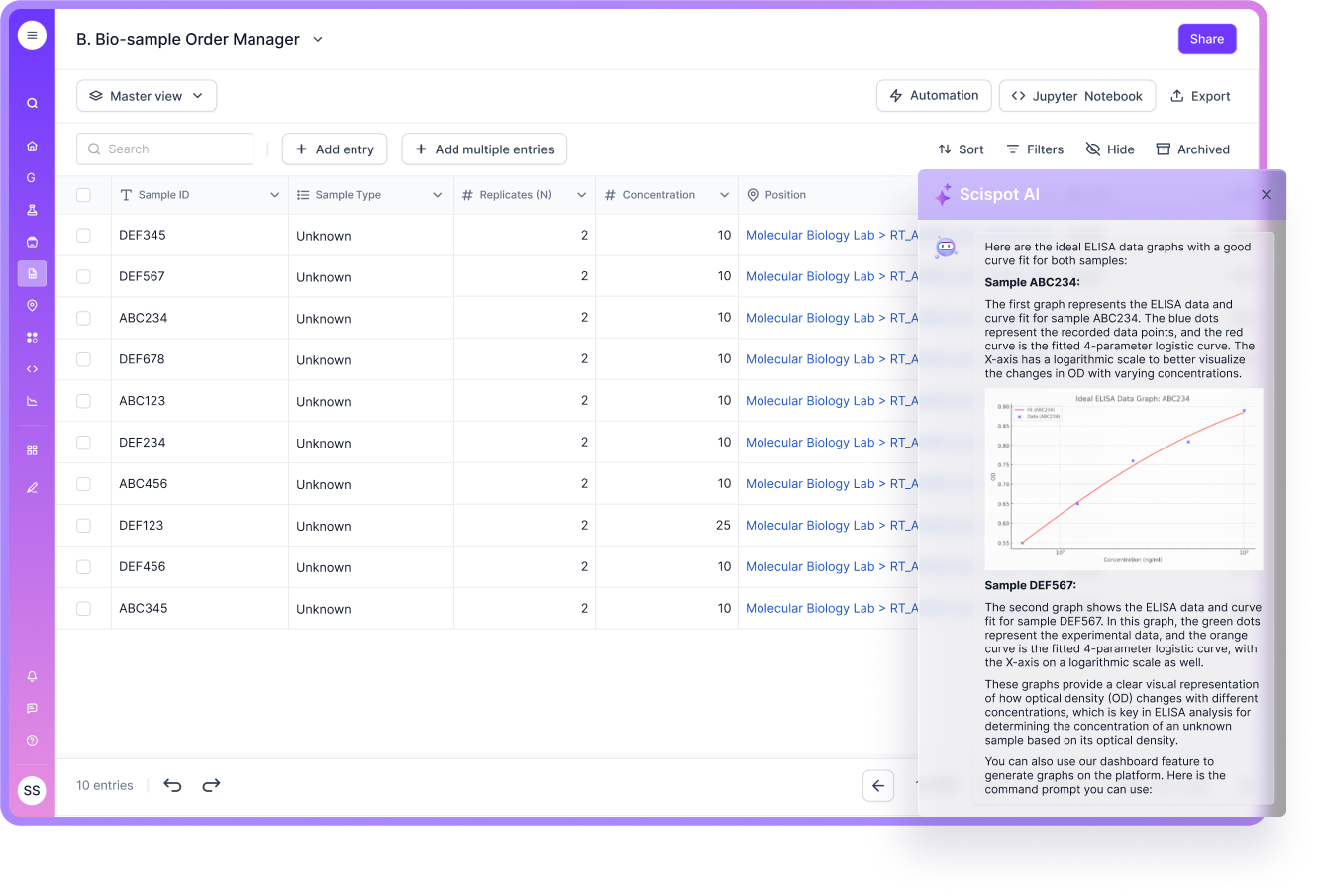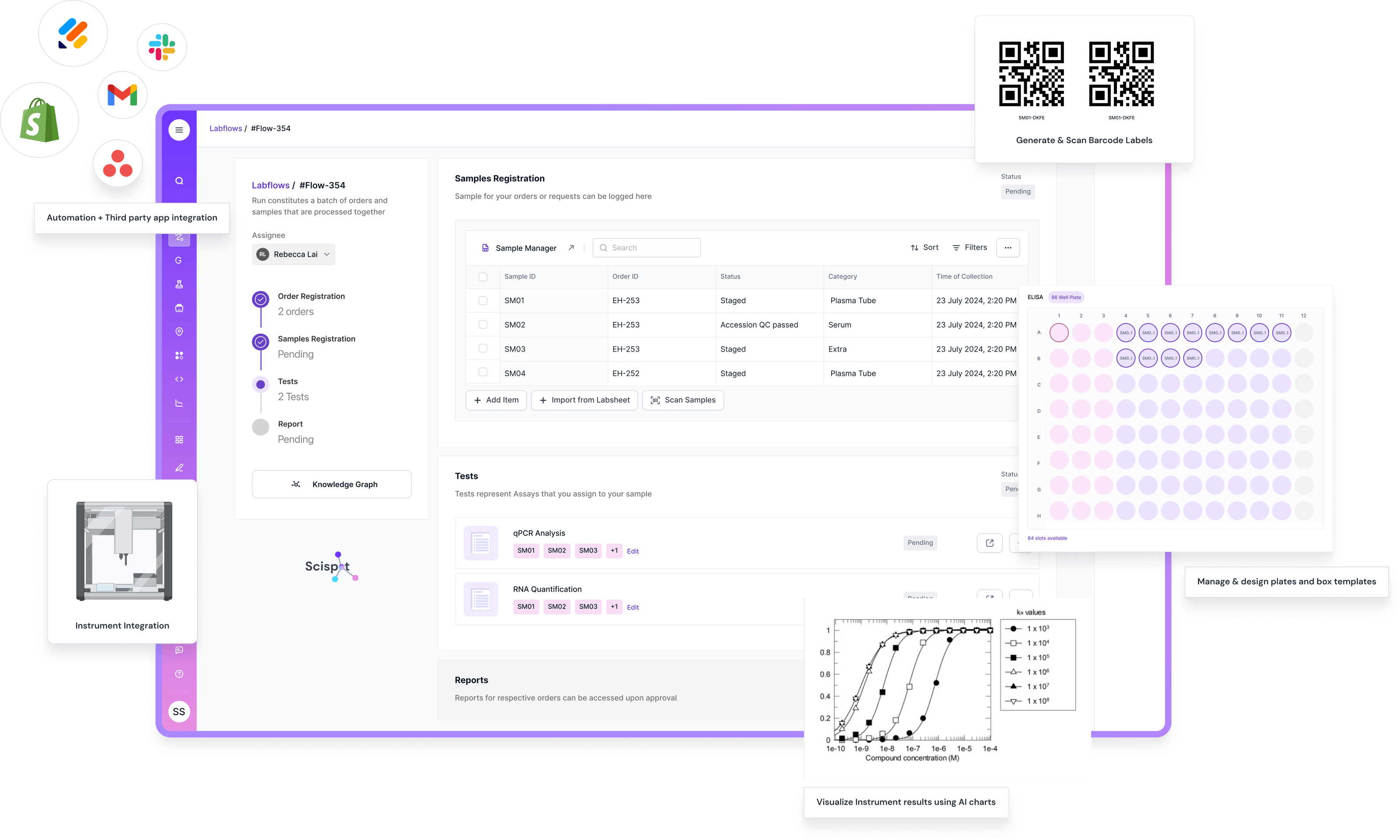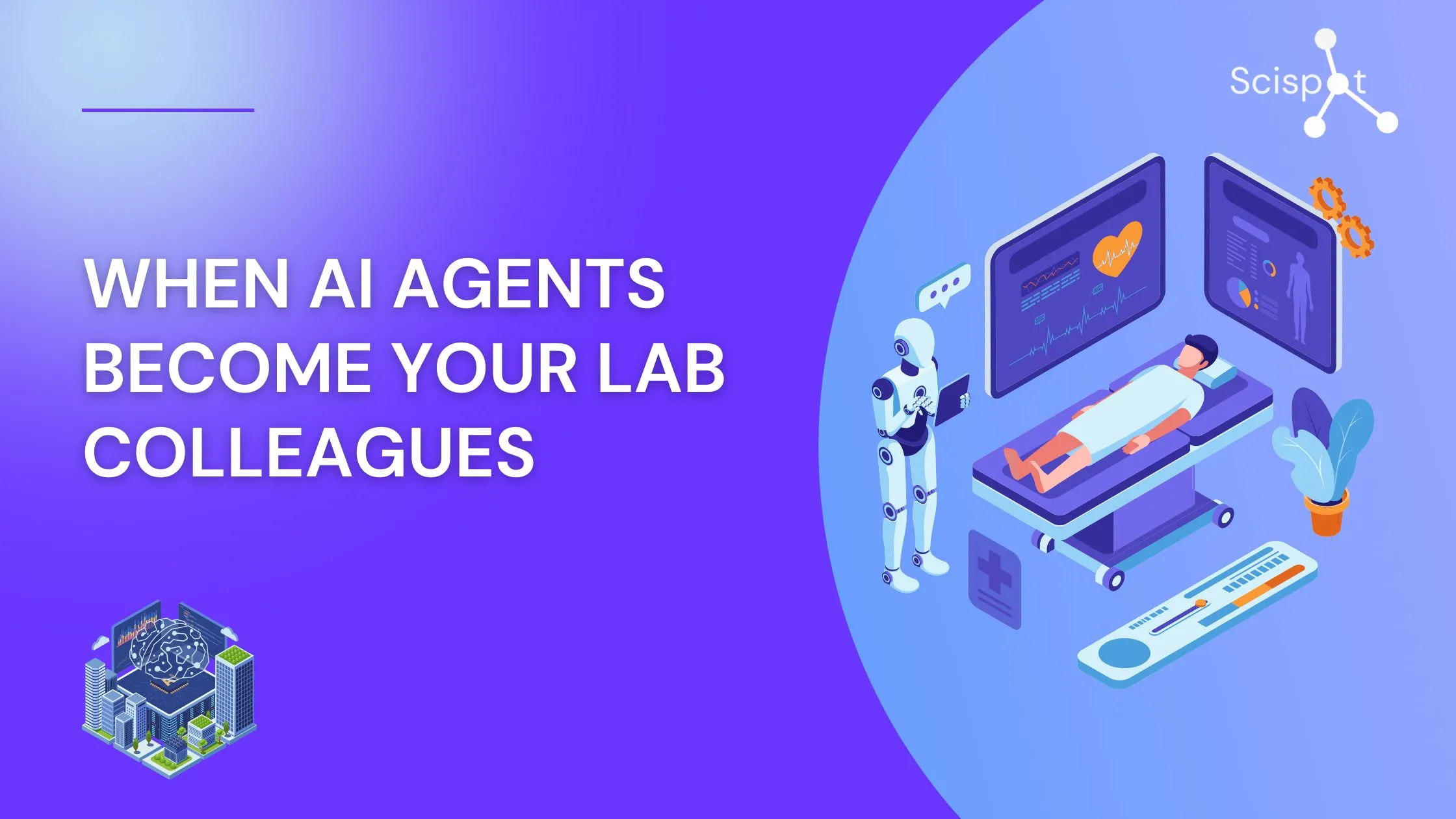Every lab has its rhythm — experiments running, instruments humming, data piling up, people hustling between benches and dashboards. What if, in that rhythm, some of the most reliable teammates weren’t human at all?
At Scispot, we imagine a world where AI agents run and operate the lab side by side with their human peers. Not as silent algorithms in the background, but as visible, accountable, and conversational partners that help scientists focus on the science rather than the grind.

The Shift: From Automation to Collaboration
For decades, labs have automated pieces of work — robots pipette, scripts clean data, and dashboards visualize results. But the real world of science doesn’t live in isolated pipelines. It lives in decisions, context, and exceptions. Someone still has to ask, “Why did this sample fail QC?” or “Which run is ready for review?”
Scispot’s vision moves beyond automation toward multi-agent collaboration — a system where multiple AI agents handle different parts of lab operations, communicate with each other, and keep humans in the loop. Each agent has a clear identity, a defined responsibility, and a sense of when to ask for help.

Meet the Agents
In our blueprint, every lab runs on a shared Lab Operating System — Scispot’s LabOS. Within it live specialized AI agents that interact through typed data, policies, and real-time events.
1. The Data Agent:
Listens to instruments and APIs. When a sequencer finishes a run, this agent ingests the raw files, validates schemas, and alerts you if two samples share an ID or if metadata is missing. It turns chaos into clarity.
2. The QA Agent:
Knows your quality rules. It reviews incoming data, runs validation checks, compares results against historical baselines, and flags anomalies before they turn into problems. It can approve straightforward cases automatically and route ambiguous ones for human review.
3. The Procurement Agent:
Monitors reagent usage, stock levels, and expiration dates across experiments. When it sees a depletion trend, it drafts a new purchase order or suggests substitutes based on previous approvals. It learns your vendor preferences and lead times.
4. The Reporting Agent:
Once the analysis is complete, it compiles results, attaches lineage, applies your templates, and generates reports ready for a digital signature. It never forgets to include version numbers or audit trails.
Each of these agents speaks the same data language, understands lab policies, and can collaborate through the LabOS — much like team members on Slack or Teams, but wired directly into the data backbone.

Why Multi-Agent Systems Matter
The power isn’t just in having one intelligent helper. It’s in having many agents that coordinate intelligently.
When a sample passes QC, the QA agent tells the Reporting agent to build a draft. When QC fails, it notifies the Data agent to re-ingest or trigger reanalysis. The Procurement agent watches those events too, anticipating reagent usage. Every agent acts independently but within a shared orchestration layer.
The result is a self-managing lab — not autonomous in the sci-fi sense, but aware, responsive, and transparent. Scientists still make the final calls, but they operate within a system that anticipates their needs and handles the mundane.
The Human + AI Dynamic
Scispot’s philosophy is clear: automation doesn’t replace scientists; it amplifies them.
In the labs of tomorrow, people will focus on designing experiments, interpreting results, and forming hypotheses. AI agents will handle everything else — the data validation, job scheduling, compliance checks, and paperwork.
Imagine walking into your digital lab console in the morning:
- The Data Agent has already ingested last night’s sequencing runs.
- The QA Agent leaves you a note: “All runs passed except C1D3 — drift detected.”
- The Procurement Agent quietly processed a reorder for your depleted antibody.
- The Reporting Agent queued up draft reports, waiting for your e-signature.
You start your day reviewing science, not chasing spreadsheets.

Trust, Transparency, and Control
For AI to work alongside humans, it must earn trust. That’s why Scispot designs every agent with explainability and auditability at the core.
Every action is logged — what triggered it, what data it used, which policy it followed, and what human approvals were required. If an agent flags a sample, you can see its reasoning, review the lineage, and decide whether to accept or override it.
AI doesn’t act in the shadows; it works in the open, in full view of its human teammates.
The Road Ahead
We are not building a single AI. We’re building an ecosystem of many coordinated, observable, and personalized to each lab’s workflows. Over time, new agents will emerge:
- An Intake Agent for patient or client orders.
- A Compliance Agent to monitor CFR Part 11 and HIPAA checks.
- An Analysis Agent to train and run models on structured lab data.
- A Forecasting Agent to predict experiment timelines or reagent shortages.
The dream is simple yet ambitious: a lab where every process, every decision, and every dataset flows through a network of AI and human peers — each doing what they do best.

Scispot’s Promise
Scispot’s mission has always been to turn every lab into an AI powerhouse. Multi-agent collaboration is the natural next step. It’s not about replacing scientists — it’s about freeing them to think, create, and discover at a pace that matches the complexity of modern science.
The lab of the future won’t just run faster. It will run smarter, together — humans and AI agents, shoulder to shoulder, discovering what’s next.






.webp)
.webp)
.webp)



